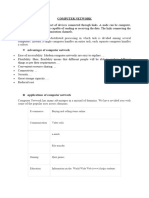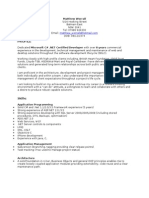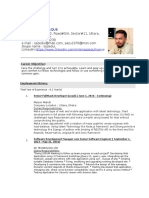0% found this document useful (0 votes)
31 views5 pagesComputer Networks
The document provides an overview of computer networks, defining them as interconnections of devices for data sharing and detailing their evolution from ARPANET to modern networks. It categorizes networks into types such as PAN, LAN, MAN, and WAN, and discusses various network devices and topologies. Additionally, it covers key concepts like the Internet, World Wide Web, IoT, and the Domain Name System (DNS).
Uploaded by
biswassubhayu1Copyright
© © All Rights Reserved
We take content rights seriously. If you suspect this is your content, claim it here.
Available Formats
Download as DOCX, PDF, TXT or read online on Scribd
0% found this document useful (0 votes)
31 views5 pagesComputer Networks
The document provides an overview of computer networks, defining them as interconnections of devices for data sharing and detailing their evolution from ARPANET to modern networks. It categorizes networks into types such as PAN, LAN, MAN, and WAN, and discusses various network devices and topologies. Additionally, it covers key concepts like the Internet, World Wide Web, IoT, and the Domain Name System (DNS).
Uploaded by
biswassubhayu1Copyright
© © All Rights Reserved
We take content rights seriously. If you suspect this is your content, claim it here.
Available Formats
Download as DOCX, PDF, TXT or read online on Scribd
/ 5






















































































